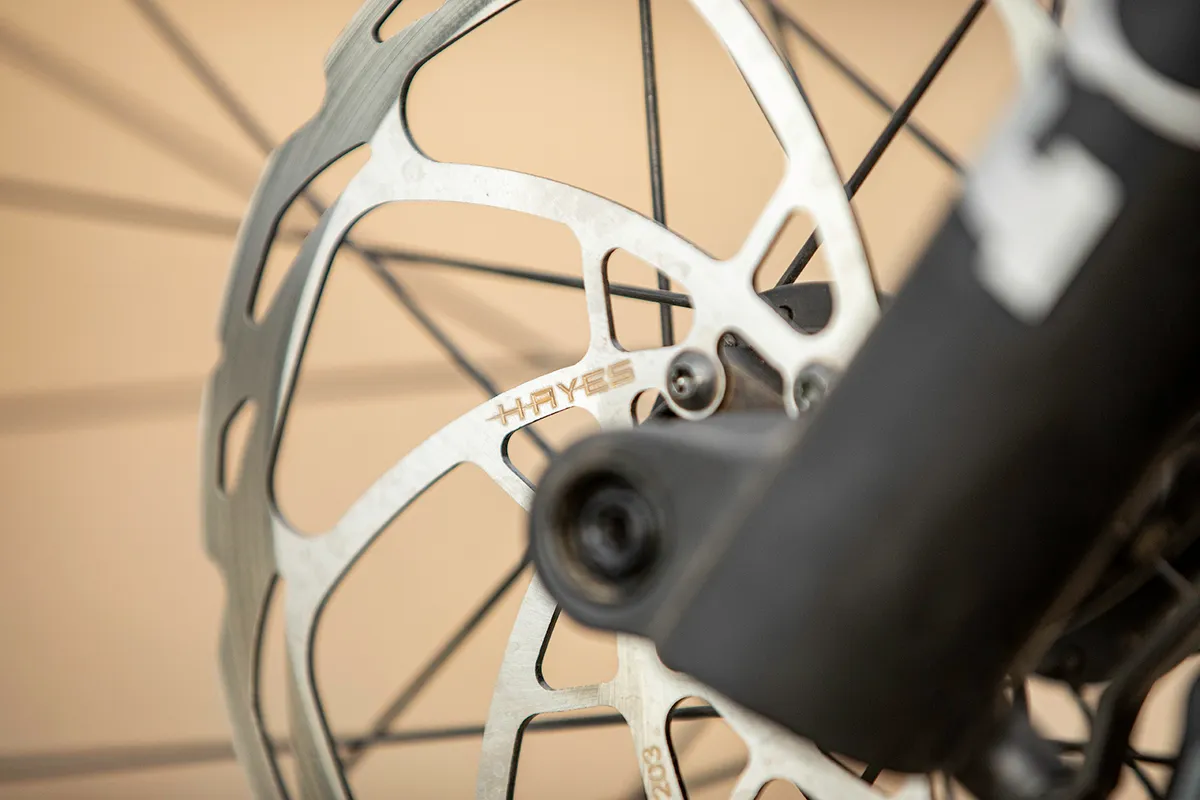Canyon’s previous-generation Torque was one of a dying breed of long-travel 650b-wheeled bikes.
It’s been reworked substantially this year, with new frame details, revised geometry and bigger 29in wheels at each end.
Canyon Torque 29 AL 6 frame and suspension
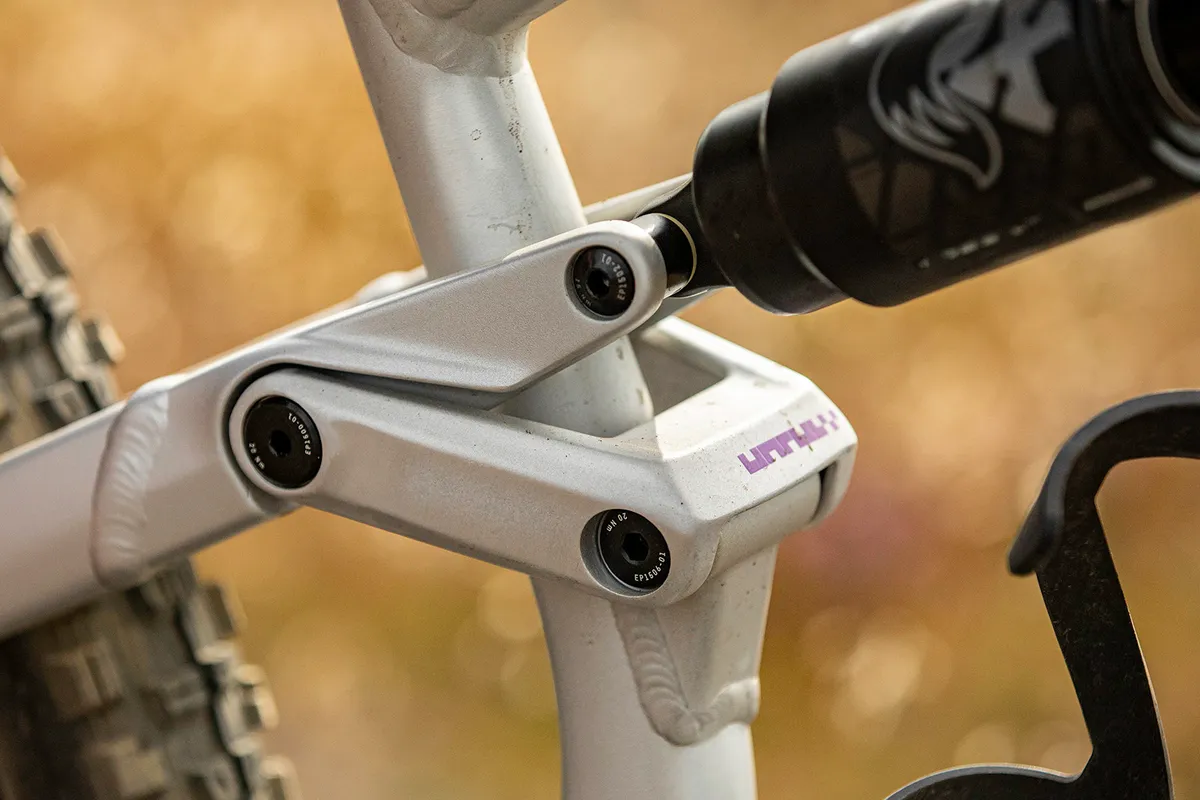
In common with other new Canyons, the Torque’s low-slung frame has good standover clearance, rocks some pretty slick lines and is better finished than ever.
Out back, there’s the tried-and-tested four-bar suspension design we’ve come to expect from the German brand, plus a SRAM universal derailleur hanger, which will be easier to replace if you damage it hucking off cliffs away from home.
The new Torque is also available in carbon fibre, with adjustable geometry (via a flip chip at the tip of the seatstays, which isn’t on the alloy version) and 29in, 650b or mixed (MX) wheel sizes.
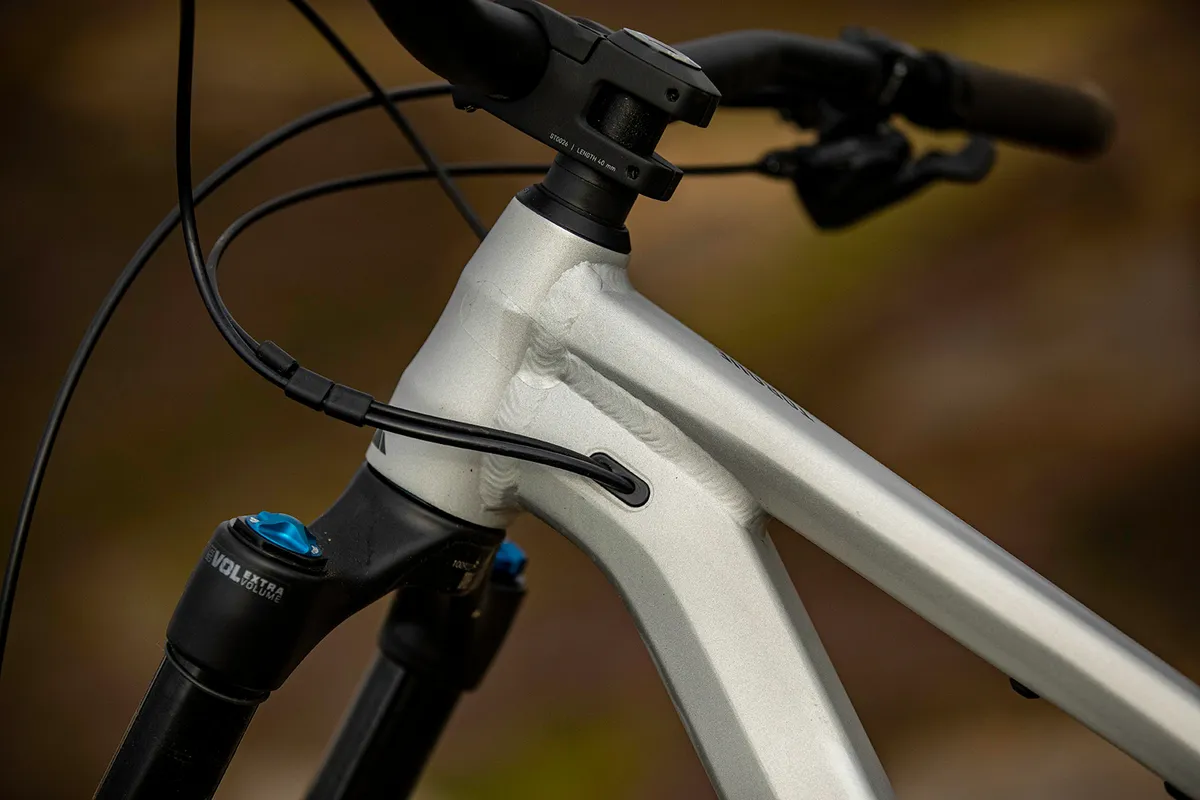
This, however, is the seriously robust-looking aluminium chassis, with big, beaded welds on the compact front triangle.
The old shock yoke is gone, with the air-sprung Fox Float X2 damper now attaching directly to the seatstay tip, and the smooth-edged rocker link wrapping around the curved seat tube to meet the stays further down.
There’s (finally) room for a water bottle on the curvy down tube. The pivot hardware uses steel inserts for durability, but the frame is still said to be 200g lighter than the previous generation.
Canyon Torque 29 AL 6 geometry

This aluminium Torque lacks the geometry-adjust feature found on the carbon version.
Instead, Canyon has split the difference, giving the AL version the head angle from the slack setting (63.5 degrees) and the effective seat tube angle of the steeper setting (78 degrees) as found on the carbon frame, along with the 30mm bottom bracket (BB) drop.
These angles are pretty normal for a ‘bike park’ machine nowadays, and Canyon has stretched the latest Torque’s (carbon and aluminium frames) sizing so it’s in line with many contemporaries.
The large frame tested here has a 485mm reach (the key indicator of distance from hands to feet). While this sounds roomy, it’s actually 5mm shorter than the reach on the carbon 29er and doesn’t leave the frame feeling massive.
This is something to be aware of, because loads of rival mountain bikes with marginally shorter claimed reaches on paper feel bigger than this.
| | M | L | XL |
|---|---|---|---|
| Seat angle (degrees) | 78 | 78 | 78 |
| Head angle (degrees) | 63.5 | 63.5 | 63.5 |
| Chainstay (mm) | 441 | 441 | 441 |
| Seat tube (mm) | 430 | 435 | 475 |
| Top tube (mm) | 594 | 620 | 647 |
| Head tube (mm) | 105 | 115 | 125 |
| Bottom bracket drop (mm) | 30 | 30 | 30 |
| Wheelbase (mm) | 1,247 | 1,277 | 1,306 |
| Standover (mm) | 766 | 768 | 775 |
| Stack (mm) | 628 | 637 | 646 |
| Reach (mm) | 460 | 485 | 510 |
Canyon Torque 29 AL 6 specifications
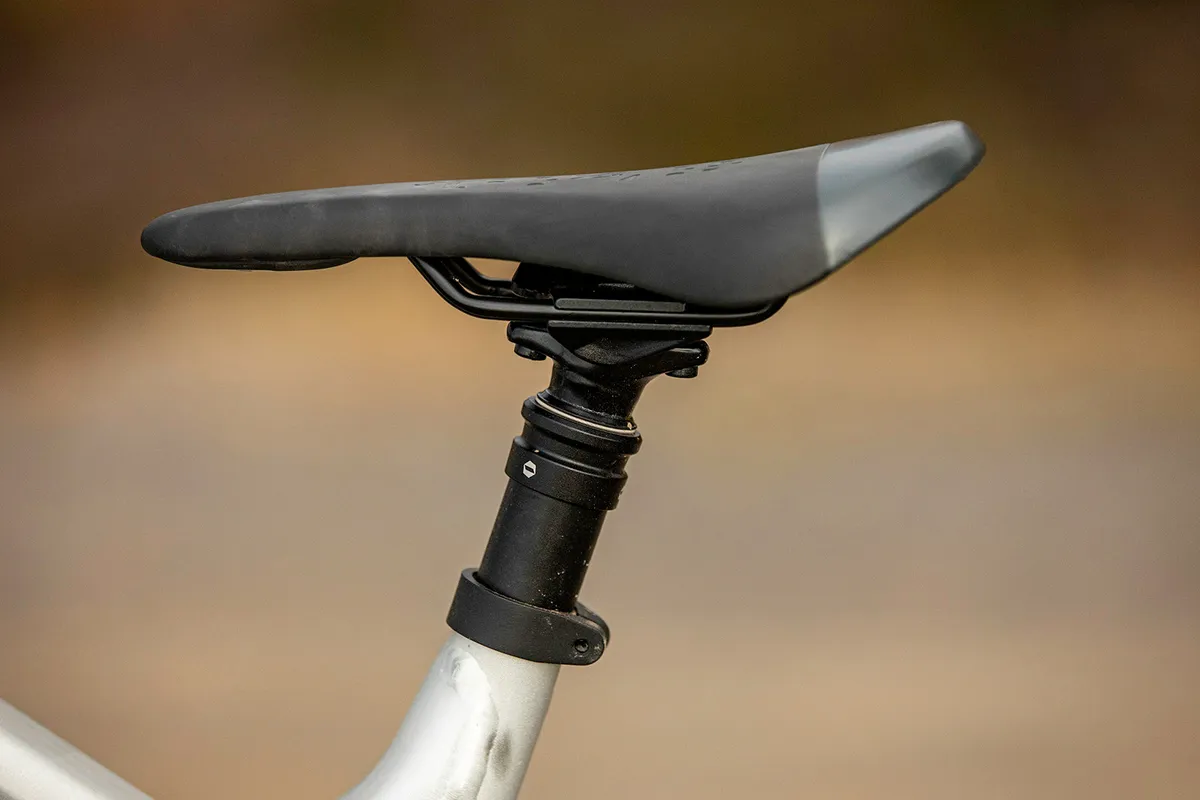
It’ll be no surprise to hear that Canyon has nailed the component choices.
As one of the biggest brands, it’s at the front of the line for the best parts in times of supply issues, and by selling direct to the customer and delivering in a cardboard box, its prices are roughly 25 per cent better value than shop-bought rivals.
Highlights include stiff and strong DT Swiss freeride FR 2070 wheels with 30mm-wide (internal) FR 560 rims that are hard to dent and damage. These are shod with arguably the best Maxxis tyre combination – a 3C MaxxGrip-compound Assegai up front and faster-rolling MaxxTerra Minion DHR II at the rear, with EXO+ and DD casings, respectively.
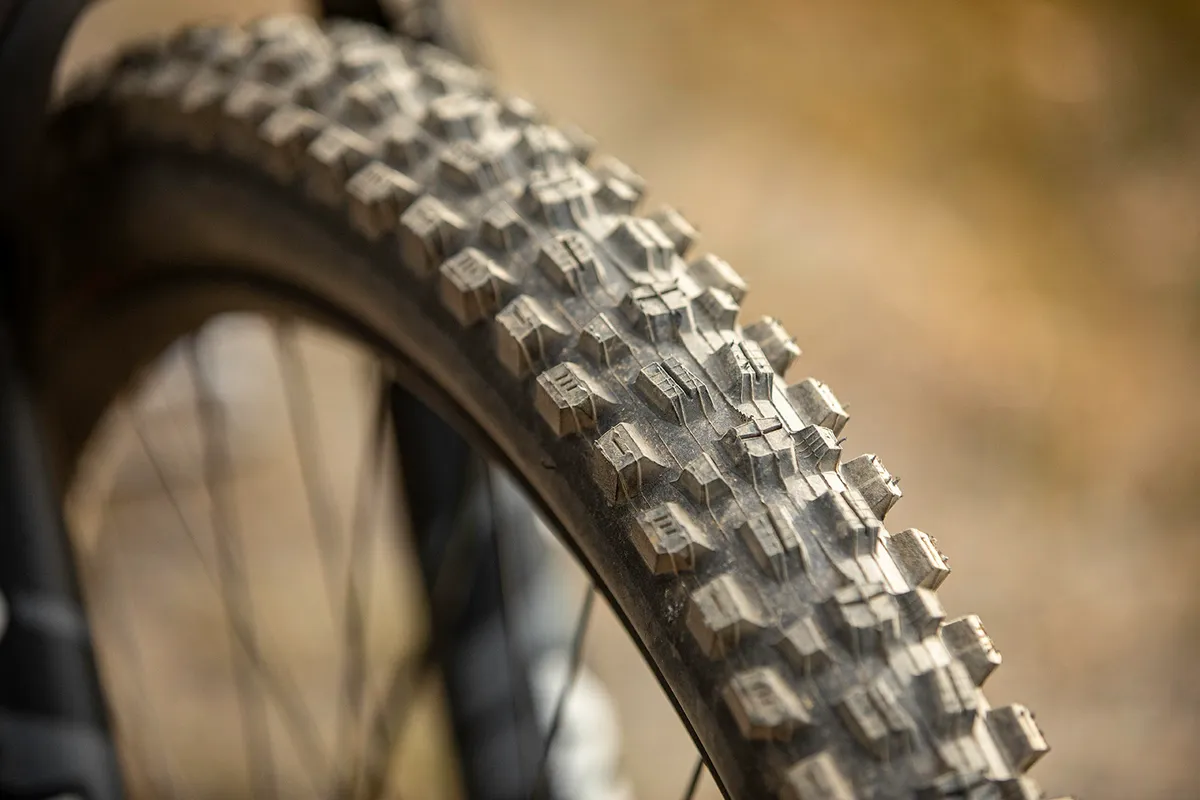
The trade-off for the strong wheels is more weight to lug uphill, and the workhorse drivetrain and brakes weigh marginally more than pricier kit, too.
However, Shimano’s SLX kit is perfectly sorted and reliable, providing wide-range gearing to winch up the steeps and powerful enough four-piston calipers and Ice-Tech brake pads that really bite on fast descents.
While the Performance-level Fox 38 fork and Float X2 shock have reduced adjustment and a slightly less refined ride quality than the brand’s priciest Elite and Factory kit, you can still add low-speed rebound and compression damping at both ends, via countable-click dials and a sweeping compression knob on top of the oversized fork leg.
Canyon’s own bar, stem and dropper seatpost are well-finished, a sensible shape and function well, plus the bike comes with a bottle cage installed to save you some money.
Canyon Torque 29 AL 6 ride impressions.
Climbing performance
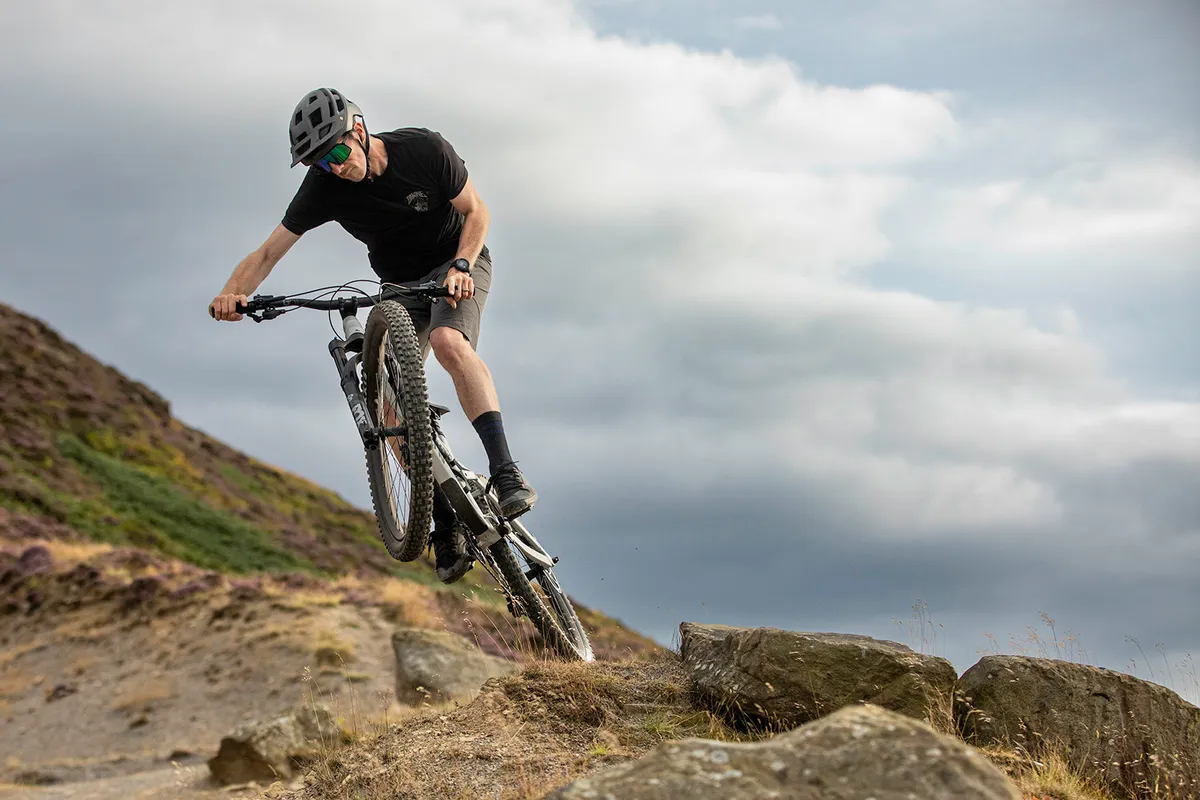
With a frame construction rated ‘Cat 5’ by Canyon, the Torque shares the same bombproof build quality as the Sender DH rig raced at World Cups, which gives you a clue as to the major intentions here. Basically, this thing isn’t designed to win any climbing competitions.
That said, it pedals fine, with minimal bob (no matter which sprocket you’re in on the cassette), smooth turnover and a good seated position, which places your hips over the cranks and never tips your weight too far back, even on the steepest pitches.
Being built like a DH tank, the limiting factor to climbing speed is the Torque AL’s weight. At over 16.5kg, it’s a noticeable chunk of bike to lug uphill for extended periods.
Add to this the designed-to-last wheels being heavy and the sticky/grippy front tyre being painfully slow-rolling on tarmac and smooth fireroads, and climbing can be a bit of a drag. Don’t expect to get anywhere particularly fast uphill or over undulating ground.
This is all typical for the category, although there are a few bikes – such as Propain’s Spindrift – that defy expectations of how sprightly and frisky a super-long-travel enduro mountain bike can pedal and climb. Those bikes are way faster under power and quicker to accelerate than the new Torque.
Descending performance
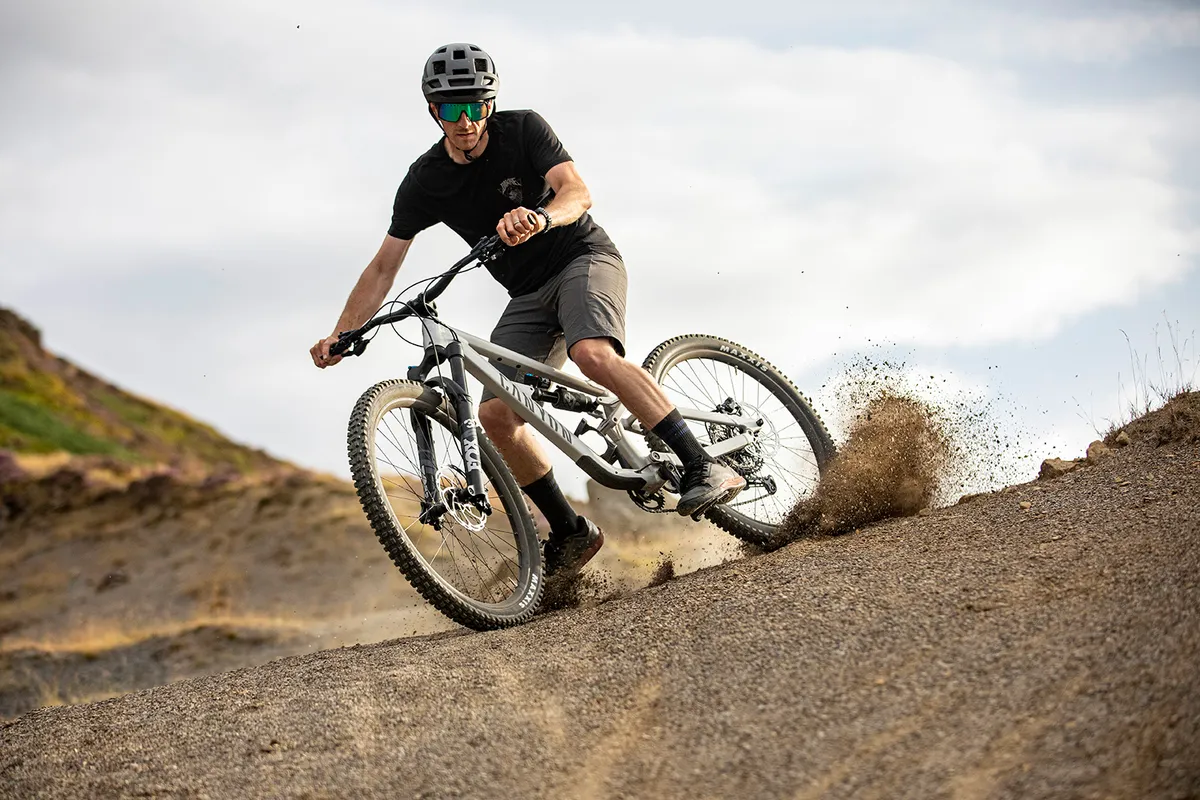
With 29in wheels and 170mm of travel, you’d expect Canyon’s rig to thrive downhill with minimal drama and maximum speed, and it doesn’t disappoint.
Pretty much nothing unsettles the wheels on the ground or scrubs the edge off its pace, and the suspension at both ends feels deep and fluid enough to iron out creases on seriously rocky and rooty terrain.
The large size has stacks of stability and a calm ride. It trucks on down everything from raw, loamy enduro tracks littered with natural obstructions and blown-out holes, to faster baked-hard, big-bermed DH or bike-park style terrain.
The suspension is well tuned and not so numbing or isolating that you can’t get a sense of the terrain under the wheels, but if you want to turn off your brain, stand tall, look ahead and let the Torque do its thing, you’ll fire out the exit of tracks of practically any steepness and severity unfazed.
One area where this 29er seriously differs from its predecessor (and, to an extent, from the MX CF Torque) is that it’s definitely not as manoeuvrable or as responsive to sudden inputs of body language – for example, when initiating a lean angle to cut through turns.
It also feels as though the suspension sweet spot keeps your centre of gravity marginally higher than on the old 650b-wheeled Torque.
Both these factors mean it sits marginally higher through turns and flat corners, and it isn’t as easy to load the chassis in the mid-stroke to switch direction, pump hollows or bounce back off the rear end for extra acceleration in the apex of turns.
Smooth arcs, rather than acute angles, are the way to maintain speed, then, and the whole bike feels soft, forgiving and smooth rather than taut and springy.
Testing the latest carbon Torque earlier in the year, the frame felt absolutely bombproof, but transmitted a lot of terrain feedback through hands and feet. This isn’t the case here.
This may be a consequence of the alloy frame being better-damped, the bigger rear wheel, or the different shock and fork feeling slightly less supportive – it’s hard to say.

What is clear, though, is that there’s less of the harshness and sense of a slightly fatiguing, rattly, vibration-laden ride apparent on the beefier carbon chassis.
Instead, the AL rides silently, even through the roughest sections and with puncture-defying higher tyre pressures, despite its lower-tier suspension.
This might make it the better latest-generation Torque to take somewhere such as the Alps or your local bike park for non-stop, hand-wrecking, arm pump-inducing uplift laps.
How does the Canyon Torque 29 AL 6 compare to rivals?
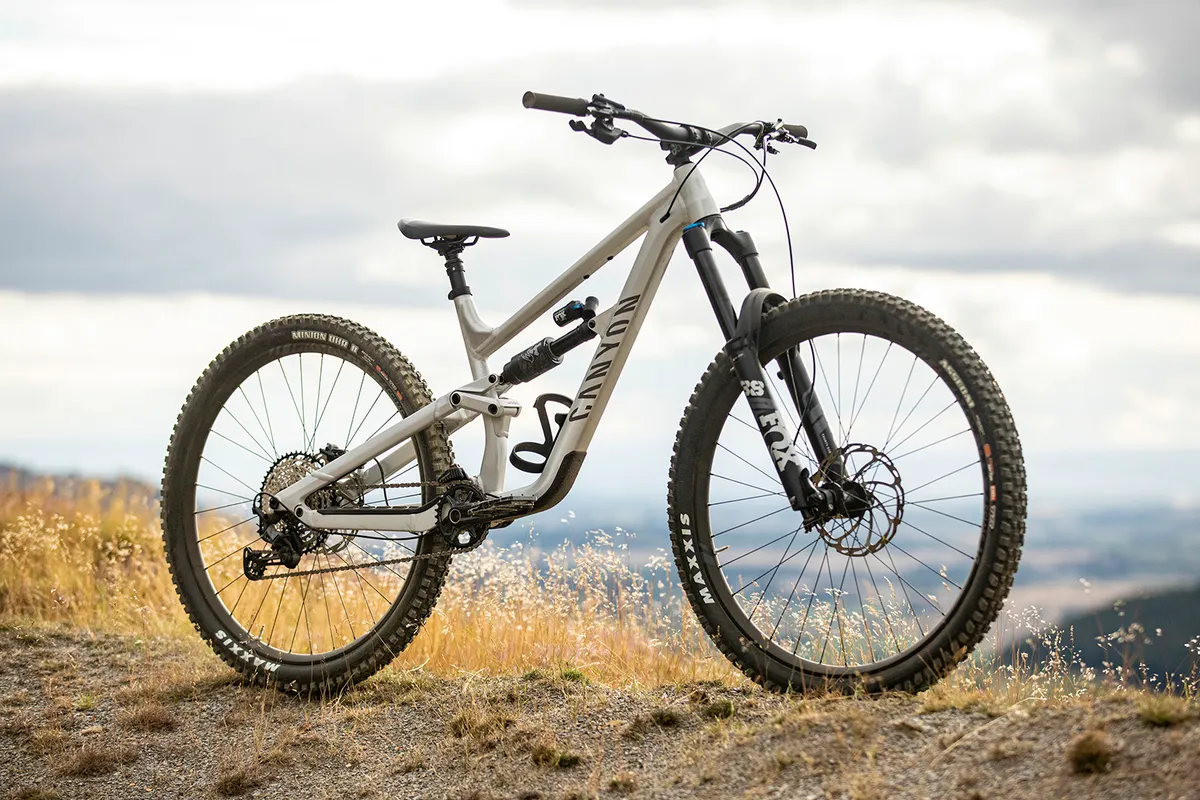
As a 650b-wheeled bike-park rig, Canyon’s previous-generation Torque had a unique, distinct set of attributes that saw it rule on jumps and man-made features, fizzing over with energy and tautness.
This new model is totally sorted, but being smooth and composed, rather than super-agile, it fails to transcend the crowded marketplace of similarly capable long-travel enduro rigs.
It’s still a sorted package, though, and you can’t argue with the price or spec here.
It's unlike two long-travel chameleons in this category that balance super-enduro capability with a taut, responsive ride quality; Propain's Spindrift and the Evil Wreckoning – the German bike blending high-speed enduro smoothness with corner-slicing attitude, and the latter popping and hopping off every trail feature more like the previous-generation Torque.
Canyon Torque 29 Al 6 bottom line
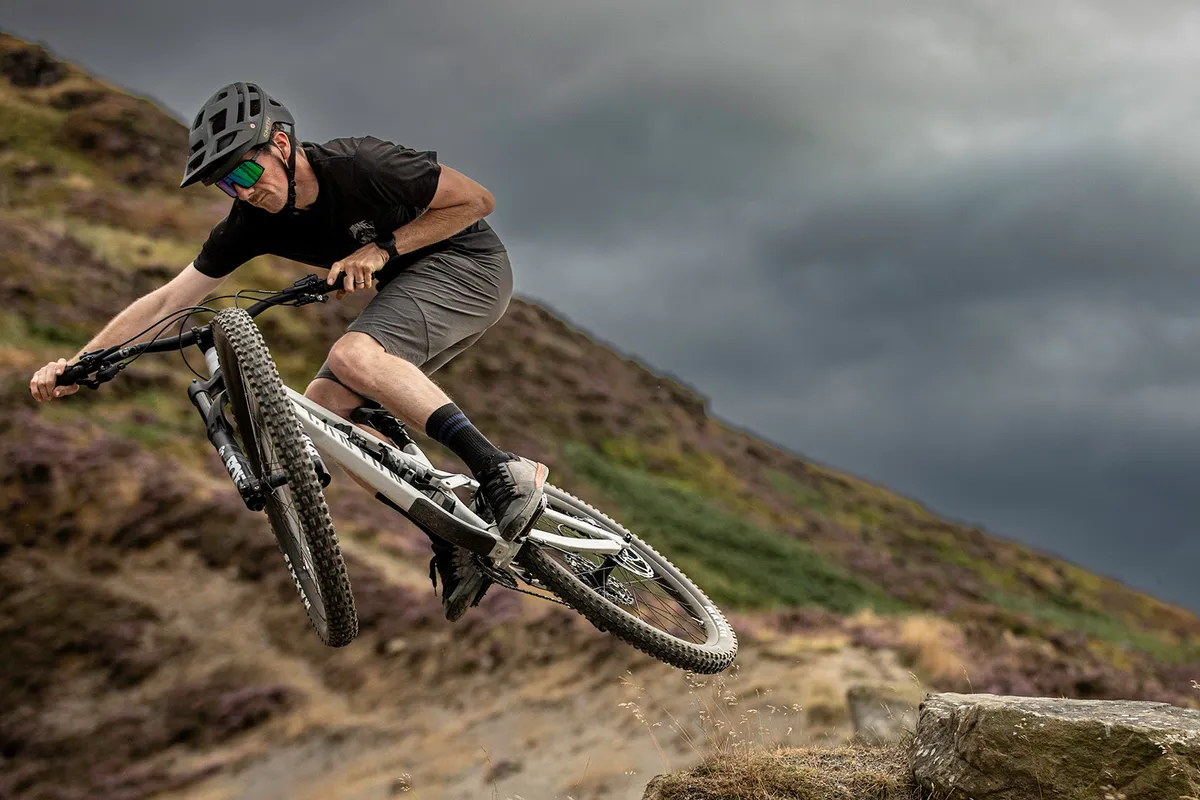
A solid package in every sense of the word, Canyon’s Torque AL 6 has got your back in the gnarliest terrain, pedals well and has great kit.
It's a tad heavy and doesn’t quite have the taut, responsive attitude of the MX CF version, though, or that bike’s ability to encourage flicking off every little rise, lip and berm.
Product
| Brand | canyon |
| Price | 3299.00 EUR,3367.98 GBP |
| Weight | 16.5500, KILOGRAM (L) - |
Features
| Fork | Fox 38 Float Performance |
| br_stem | Canyon G5 |
| br_chain | Shimano M6100 |
| br_frame | Canyon Cat. 5 aluminium alloy, 170mm travel |
| Tyres | Maxxis Assegai 3C MaxxGrip Exo+ 29x2.5in front, Maxxis Minion DHR II 3C MaxxTerra DD 29x2.4in rear |
| br_brakes | Shimano SLX M7100 w/Ice Tech pads and Hayes 203mm rotors |
| br_cranks | Shimano SLX, 170mm, 32t single chainring |
| br_saddle | fi’zi:k Gravita Alpaca X5 |
| br_wheels | DT Swiss FR 2070 |
| br_headset | Acros |
| br_shifter | Shimano SLX |
| br_cassette | Shimano SLX, 10-51t |
| br_seatpost | Iridium dropper post |
| br_gripsTape | Canyon G5 |
| br_handlebar | Canyon G5, 800mm |
| br_rearShock | Fox Float X2 Performance |
| br_bottomBracket | Token BSA |
| br_availableSizes | M, L, XL |
| br_rearDerailleur | Shimano SLX (1x12) |


